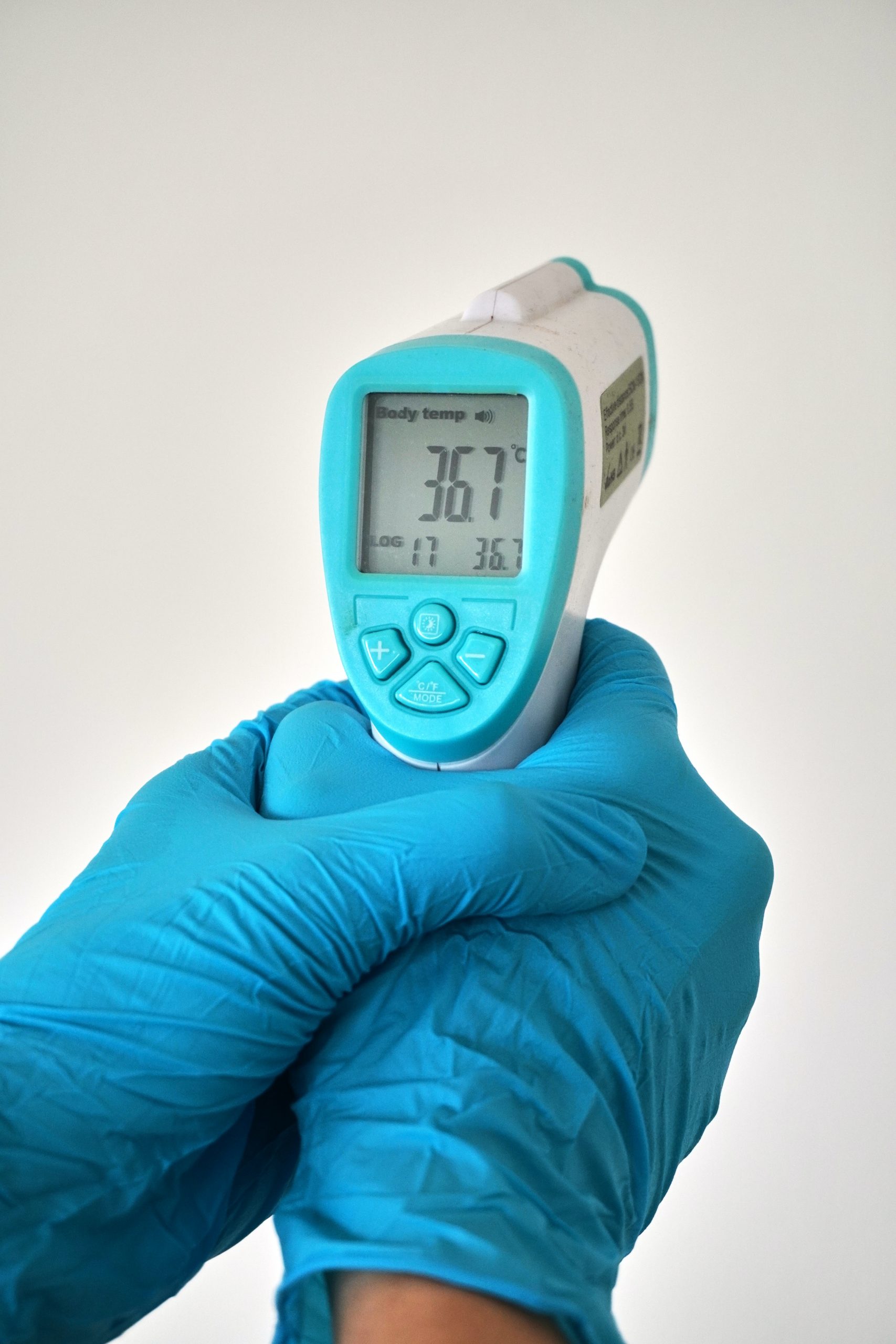Infrared temperature guns have become a commonplace safety precaution, with 37 degrees Celsius acting as the entrance pass to many offices, shops and airports. This is just one application where infrared technology provides important safety information. Here Dave Walsha, commercial development officer at precision drive system supplier, Electromechanical Systems (EMS), looks at the applications of infrared technology and the motor technologies advancing them.
Temperature guns are one method used to detect if someone is exhibiting Covid-19 symptoms. The guns quickly determine if someone has an elevated skin temperature and should therefore isolate and receive a test. This promptly separates the potentially infected individual from others. However, fever temperature screening is not the only application where infrared technology helps bring safety.
Infrared detection systems, such as temperature guns, use sensors to pick up radiation in the infrared region of the electromagnetic spectrum. Although infrared cameras use this same technology, they are much more complex. They convert the thermal energy being detected into an electrical signal, which can then be processed to produce an image. The image varies in colour, such as red for hot and blue for cold, depending on the amount of infrared radiation being detected.
From lost to found
Infrared cameras provide critical information in the emergency services. Someone is reported missing in the UK every 90 seconds, so search and rescue services must act quickly to ensure the highest possibility of finding the missing person safe and well.
However, manually searching dense areas with little visibility, such as forests and rural areas, can be labour intensive. When time is precious, infrared devices can help searchers quickly scan over large areas.
Search and rescue service teams typically comprise of searchers on the ground and in the skies. From an arial view, searchers in helicopters can use an attached infrared camera to quickly scan the large area. A missing person will
Infrared temperature guns have become a commonplace safety precaution, with 37 degrees Celsius acting as the entrance pass to many offices, shops and airports. This is just one application where infrared technology provides important safety information. Here Dave Walsha, commercial development officer at precision drive system supplier, Electromechanical Systems (EMS), looks at the applications of infrared technology and the motor technologies advancing them.
Temperature guns are one method used to detect if someone is exhibiting Covid-19 symptoms. The guns quickly determine if someone has an elevated skin temperature and should therefore isolate and receive a test. This promptly separates the potentially infected individual from others. However, fever temperature screening is not the only application where infrared technology helps bring safety.
Infrared detection systems, such as temperature guns, use sensors to pick up radiation in the infrared region of the electromagnetic spectrum. Although infrared cameras use this same technology, they are much more complex. They convert the thermal energy being detected into an electrical signal, which can then be processed to produce an image. The image varies in colour, such as red for hot and blue for cold, depending on the amount of infrared radiation being detected.
From lost to found
Infrared cameras provide critical information in the emergency services. Someone is reported missing in the UK every 90 seconds, so search and rescue services must act quickly to ensure the highest possibility of finding the missing person safe and well.
However, manually searching dense areas with little visibility, such as forests and rural areas, can be labour intensive. When time is precious, infrared devices can help searchers quickly scan over large areas.
Search and rescue service teams typically comprise of searchers on the ground and in the skies. From an arial view, searchers in helicopters can use an attached infrared camera to quickly scan the large area. A missing person will
an infrared camera can identify the component that’s causing the machine to overheat, which can then be fixed or replaced quickly. This ensures the production line is back up and running as quickly as possible to minimise lost time and maximise productivity.
Getting the right gear
Cameras viewing objects at varying distances need precision zoom and focus functions that are controlled by lenses, which can be precisely adjusted by motors. Motors also control the camera aperture, which is an opening in the lens that controls how much light passes through and falls on the image sensor.
Infrared cameras also require motors for calibration in non-uniformity correction. This is a process where a black shutter is moved across the lens and the camera takes an image. From this image the camera can measure the heat it is producing itself, and so process its own thermal signature out of future photos, as to not interfere with the thermal image of the subject.
Ticking the boxes
Motors used in infrared cameras must meet certain performance requirements. In applications where the camera is handheld, the motor must be lightweight so that the device can be easily carried by the user.
In critical applications, such as search and rescue, it is vital that the motors used are reliable and repeatable, as a breakdown could have fatal consequences. Similarly, the motor must be efficient with a low power consumption, to ensure the camera can be used for a long period of time without running out of power.
EMS is the sole UK supplier of FAULHABER motors, which are renowned for a superior power density and high performance. FAULHABER motors are made in a high precision manufacturing process, with accuracy that makes them highly reliable and repeatable. In particular, FAULHABER’s flat 1512 DC gearmotor series delivers continuous torque up to 30 millinewton meters (mNm) while having a diameter of just 15 millimetres (mm).
Temperature guns have become a common safety procedure to prevent the spread of Covid-19, but there are many other applications where infrared technology is important. From finding the lost to identifying equipment faults, infrared cameras bring us valuable information that goes beyond the human eye.


